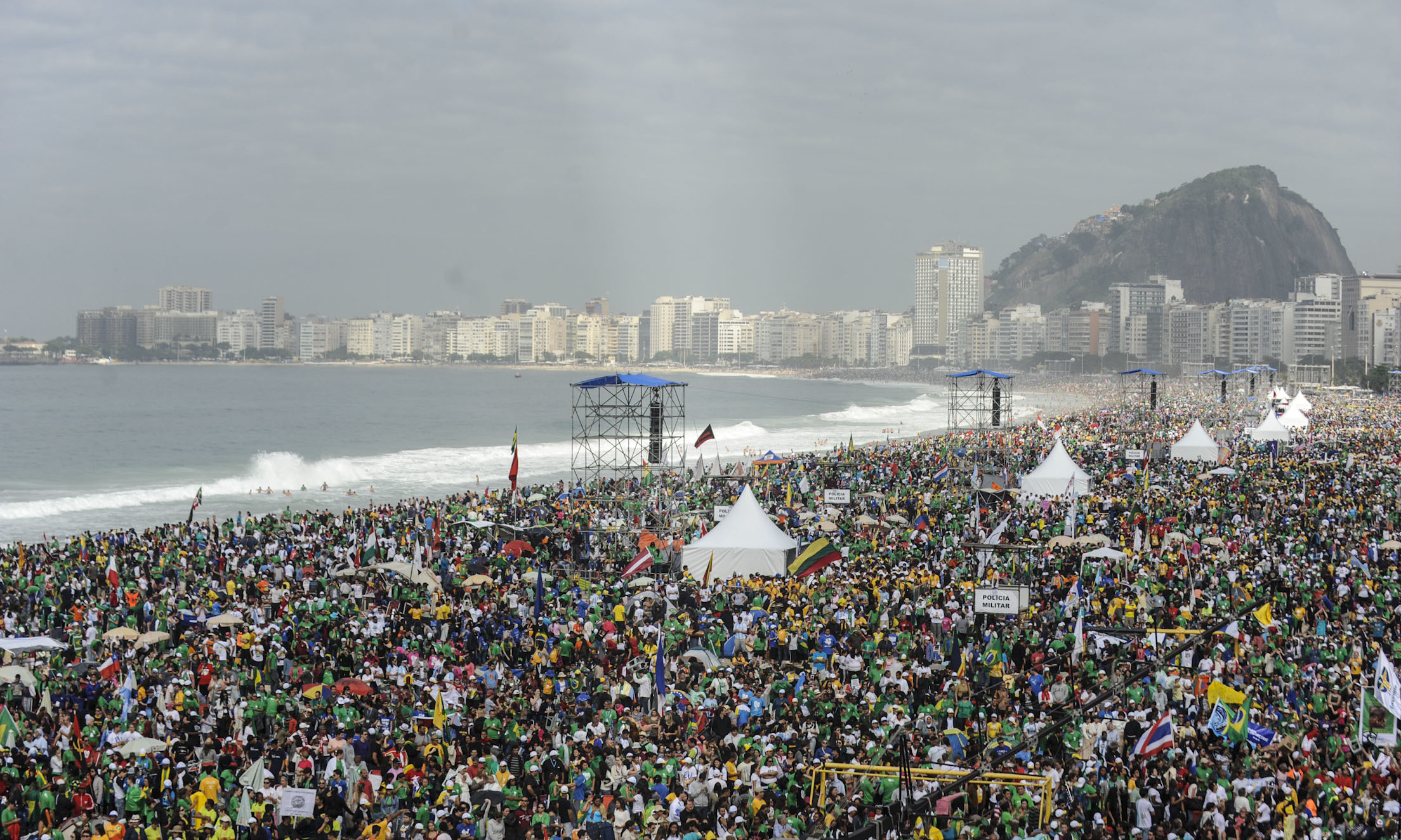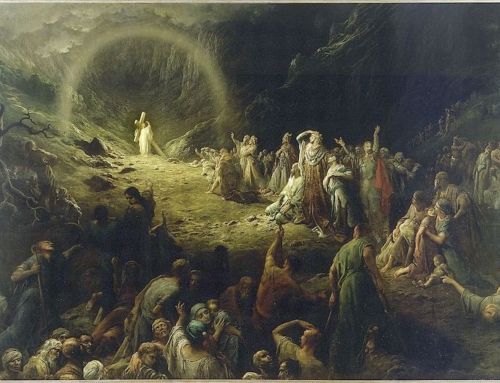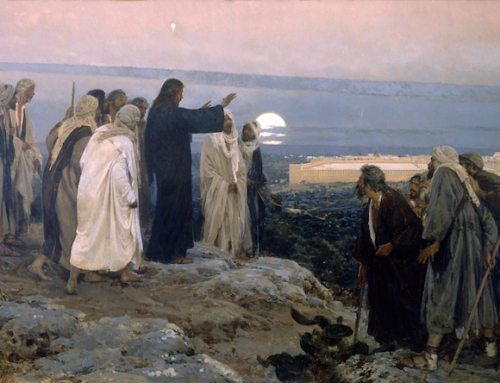“Let us offer each other the sign of peace.”
The amphitheater housing thousands of high school-aged teens erupts in a joyful rumble of handshakes, hugs, and hubbub. The kiss of peace lasts a good five minutes before the sound of a Yamaha keyboard fixed on the “church organ” setting belts out the introduction of the Agnus Dei. The lively Mass-goers regain enough composure to sing “grant us peace” before the main celebrant organizes the 100 plus concelebrants, sending them out to their carefully situated stations to begin feeding the crowd of 5,000. A playlist of five hymns sung by three angelic voices fills Communion time as pilgrims side-step across the narrow rows and steep aisles, designed more for a rock concert than for the Holy Sacrifice of the Mass.
Throughout high school and college, I have had the opportunity to attend many mega-Masses. Each liturgy contained the same formula of attempting to capture the reverence of an intimate chapel setting in a space of gargantuan proportions. For many in attendance, the presence of a lively community makes up for the feeling of claustrophobia. More importantly, the emotional experience of these mega-Masses can play a vital role in the rekindling and reversion of many lapsed Catholics who gain a sense of belonging in such a large Eucharistic celebration.
But what about when the Mass is over and everyone goes home? What happens when millennials plug back into their home parishes and endure the same spiritual setbacks they felt before the retreat? That feeling of community set on a large stage has melted away, but it does not need to be so.
What these large retreats and catechetical conferences offer young Catholics is short-term evangelization. Who wouldn’t feel at home in their Catholic parish if they were surrounded by many other young people, orthodox and accessible preaching, and beautiful liturgical music?
The mother of long-term evangelization is consistency in prayer and in action. If retreatants can appreciate the large community of a mega-Mass and still find Christ back home in a small parish setting, they will have a greater chance of holding onto that zeal when they experience spiritual dryness in prayer.
Amid all the good that these mega-Masses offer to the youth, sometimes there is more attention paid to an experience or style of prayer than to a holistic approach for a lasting relationship with Him who is truth and love. The risk is that when the beautiful music stops or our friends are not within arm’s reach at the sign of peace, we may not be strong enough to deal with challenges that shake our faith.
Christ can speak to us through these challenges. It is mysteriously the Cross of Christ that prepares us for the long haul. It is possible that Catholics can sustain a feeling of exhilaration long after they are evangelized by a specific style of worship. The goal, however, is to make this newfound renewal of a spiritual life an exercise of conviction with a flame that will not dim during periods of dryness. When we daily accompany Christ carrying His Cross, we are evangelized for the long term.
✠
Photo by Tânia Rêgo/ABr (CC-BY-3.0-BR)







